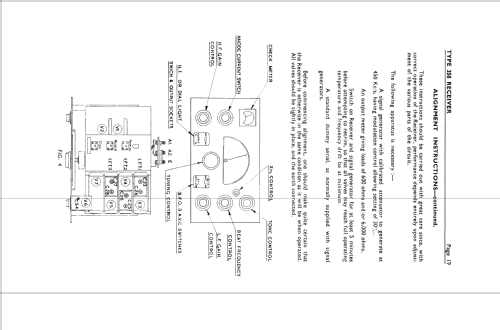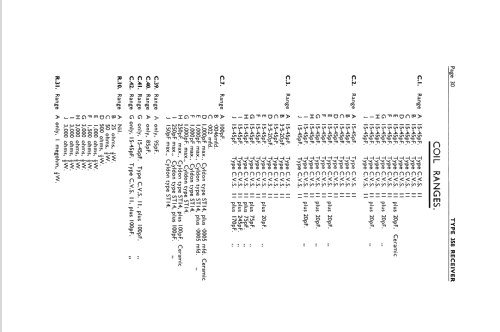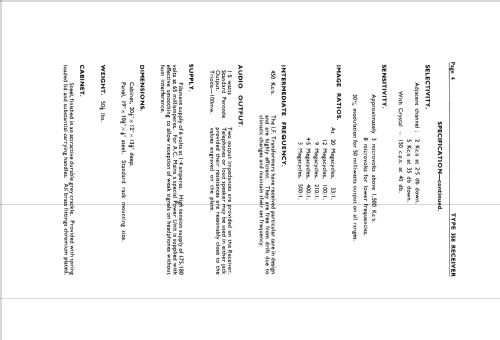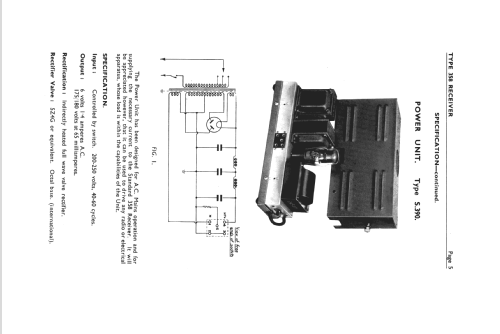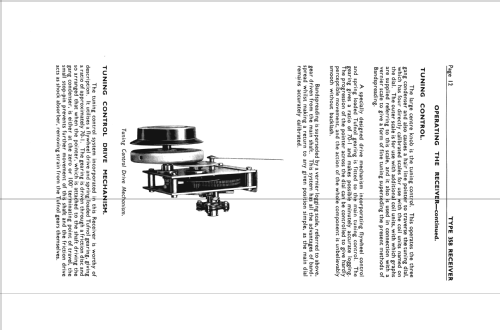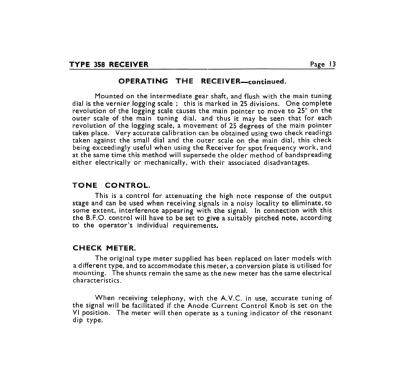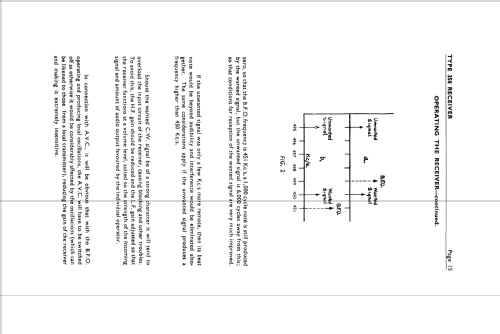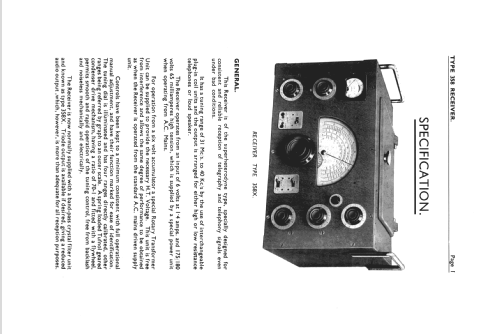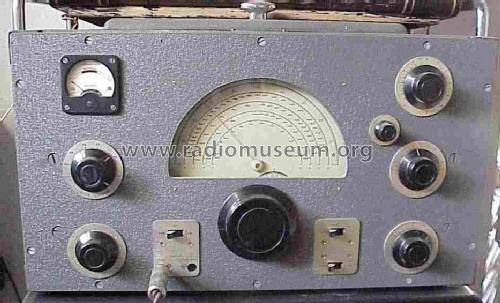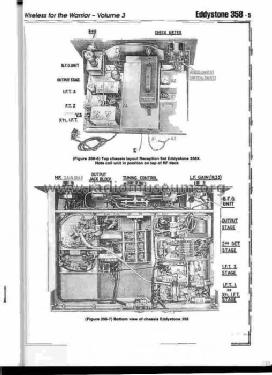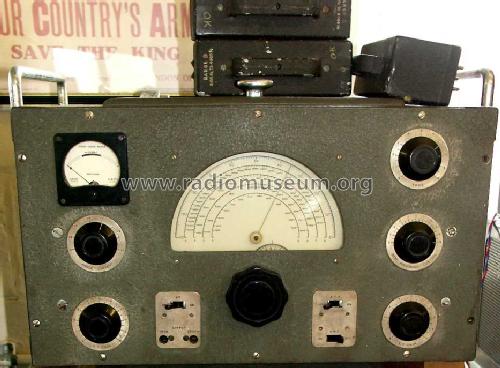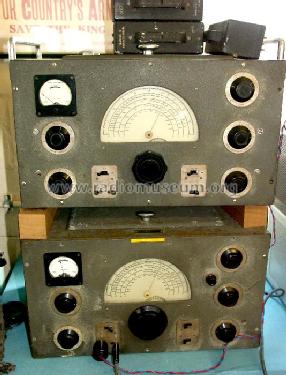- Pays
- Royaume Uni
- Fabricant / Marque
- Eddystone (Brand), Stratton and Co., Ltd., Eddystone Radio Ltd.; Birmingham
- Année
- 1940
- Catégorie
- Récepteur commercial (peut inclure bandes amateurs)
- Radiomuseum.org ID
- 95007
Cliquez sur la vignette du schéma pour le demander en tant que document gratuit.
- No. de tubes
- 8
- Principe général
- Super hétérodyne avec étage HF; FI/IF 450 kHz; 2 Etage(s) BF
- Gammes d'ondes
- PO et plus que 2 x OC
- Tension / type courant
- Alimentation Courant Alternatif (CA) / 200-250 Volt
- Haut-parleur
- - Pour casque ou amplificateur BF
- Puissance de sortie
- 1.5 W (qualité inconnue)
- Matière
- Boitier métallique
- De Radiomuseum.org
- Modèle: 358 - Eddystone Brand, Stratton and
- Forme
- Modèle de table générique
- Dimensions (LHP)
- 20.5 x 12 x 13.5 inch / 521 x 305 x 343 mm
- Remarques
- Coverage 40 kHz - 31MHz in 10 bands. Wave band is changed by plugging in different coil units.
No crystal filter, note the lacking switch left of "tone" and "BFO" controls (see 358X for model with crystal filter).
Matching external Power supply S390 supplying 6V LT and 175/180V HT.
Army tube designations: ARP34 ARTH2 ARP34 ARP34 AR21 ARP34 VT52 ZA3489.
Navy designation Receiver B34.
- Poids net
- 22.9 kg / 50 lb 7 oz (50.441 lb)
- Littérature
- Wireless for the Warrior Vol.3
- Auteur
- Modèle crée par Nigel Hulse. Voir les propositions de modification pour les contributeurs supplémentaires.
- D'autres Modèles
-
Vous pourrez trouver sous ce lien 255 modèles d'appareils, 125 avec des images et 46 avec des schémas.
Tous les appareils de Eddystone (Brand), Stratton and Co., Ltd., Eddystone Radio Ltd.; Birmingham
Contributions du forum pour ce modèle: Eddystone Brand,: 358
Discussions: 2 | Publications: 2
For changing of wavebands, plug-in "coil units" have to be put in place inside the receiver. A hinged cover gives access to the chassis of the receiver, the shielded coil units (aerial, mixer and oscillator coils) are plugged in on top of the chassis.
The band segments are as follows:
Range A: 22000 - 31000 kHz
Range B*: 9000 - 22000 kHz
Range C*: 4500 - 9000 kHz
Range D*: 2100 - 4500 kHz
Range E*: 1250 - 2100 kHz
Range F: 600 - 1250 kHz
Range G: 300 - 600 kHz
Range H: 150 - 300 kHz
Range I: 90 - 150 kHz
Range J: 40 - 90 kHz
The set has a calibrated dial only for band segments B, C, D, E, for the other band segments, the operator has to rely on the 0 - 100 logging scale and prepare his own wavelength chart.
The band segments are as follows:
Range A: 22000 - 31000 kHz
Range B*: 9000 - 22000 kHz
Range C*: 4500 - 9000 kHz
Range D*: 2100 - 4500 kHz
Range E*: 1250 - 2100 kHz
Range F: 600 - 1250 kHz
Range G: 300 - 600 kHz
Range H: 150 - 300 kHz
Range I: 90 - 150 kHz
Range J: 40 - 90 kHz
The set has a calibrated dial only for band segments B, C, D, E, for the other band segments, the operator has to rely on the 0 - 100 logging scale and prepare his own wavelength chart.
Martin Bösch, 02.Jan.07
these are the tube substitutes according to a manual for the 358x found at BAMA:
.png)
hope that helps mb (edit: Graphic mit verbesserter Lesbarkeit, danke GR)
.png)
hope that helps mb (edit: Graphic mit verbesserter Lesbarkeit, danke GR)
Martin Bösch, 02.Jan.07


